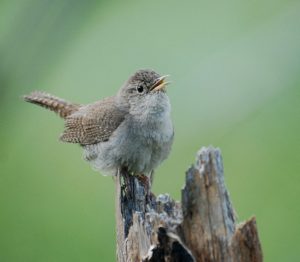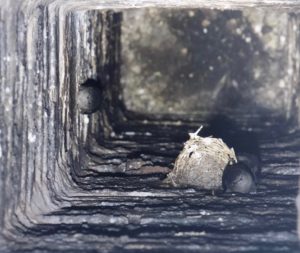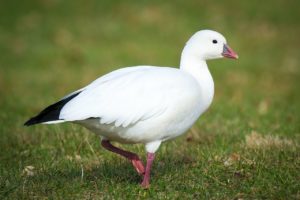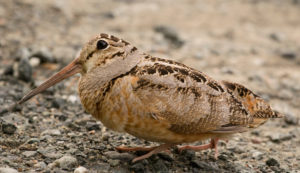Ripples from the Dunes by Kennedy Zittel, Naturalist
 The other week some of our staff went out to part of our preserve to spread some culver’s root seeds in a prairie where the rusty-patched bumble bee has been spotted.
The other week some of our staff went out to part of our preserve to spread some culver’s root seeds in a prairie where the rusty-patched bumble bee has been spotted.
It was a beautiful day, the sun was shining with the occasional fluffy white cumulus clouds floating by. Goldfinches called from the treetops while the occasional turkey vulture soared seemingly in the clouds above. Frogs were heard calling from the nearby forest’s creek, a wonderful sound of spring. Rabbits hopped across the path while a woodchuck ran off to seek shelter from the people invading its peaceful day.
Besides being a reason to be outside in such beautiful weather, we were out there spreading Culver’s root seeds for an even more important reason… Culver’s root is one of the federally endangered rusty-patched bumble bee’s favorite flowers! And who can blame them? Culver’s root is great! Besides looking beautiful, Culver’s root is a very important native pollinator plant.
Culver’s root (Veronicastrum virginicum) is a flowering plant that is a member of the plantain family (Plantaginaceae). An unbranched stem with whorled deep green-colored leaves leads up to beautiful white flower clusters that are described to resemble candelabra. The plant can grow anywhere from 2-6 feet tall. They prefer sunny areas with semi-wet soil, so they do very well in the prairies here at Woodland Dunes.
Culver’s Root is an amazing pollinator plant. Their bloom period (early summer-mid summer) fills an important gap between the end of spring ephemeral blooming and the start of a lot of other prairie plants that begin to bloom mid-late summer. They are a favorite to many pollinator species, bees and butterflies alike!
In fact, they are so popular that I often start my pollinator surveys looking at who is flying around the Culver’s root, as they are sure to have some pollinators buzzing or fluttering around. Just last summer I saw a rusty-patch buzzing around the flowers of a Culver’s root plant, showing that they really do enjoy this neat plant.
If you would like to see what Culver’s root looks like in person, or any of the pollinators that enjoy the plant, a good place to check it out is right along Willow Trail! The white flowers stand out amongst the purples of the blazing star and bergamot, and the yellow of St. John’s Wort shrubs. They can be found growing directly next to the trail in the prairie area near Todd’s Pond. Once summer is in full swing, the weather is warmer, bees are buzzing, and flowers are blooming, head on out to the prairie area to see some of the Culver’s root for yourself, and perhaps some really neat pollinators too!




